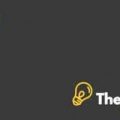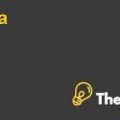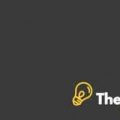COLA WAR
In thecontext of this case, the Pepsi and the Coca-Cola were competing in thebeverage market.Cumulatively, they had capture huge amount of market share with prosperous profit margins. Whereas, the reason behind this profitability wascomparatively to other beverages, they were cheap to produce, another reason for this cost-effectiveness,which they have finest distribution channels. Which hascontributedto such profitability is that, due to their brand image they are highly demanded by consumers. Also, they had keep the bottling and packaging in the house which reduced their cost, and consequentlythismight result in increased profits margins. However, this industry has pouring rights contract with somegas stations, restaurants and supermarkets that enabled such industry, to increased profits margins and reduced the competition.
THE EFFICIENT BOTTLING PROCESS
However, the Coke and Pepsiis mostly packaged in glass bottles, metal can and plastic bottles.Whereas, this bottling process requires high production cost and requires high labor overheads.Although, thismanufacturing process requires 50 to 100 million of capital expenditure.
Additionally, the Coke and the PepsiCompany, hadstrong control over its selling and distribution cost. Although, theyacquiredthe bottling companies and doing bottling in ahouse, in order to reduce their variable cost. Consequently, such reduction in variable cost, will lead to increase in profit margins of respective companies.
Cola War Harvard Case Solution & Analysis
These companies have categorized their products into different types and size of packages through varioussegments. Furthermore, the reason they were more efficient and effective,due to their brand image and pouring right in some different restaurants and supermarket. However, they were highly demanded by customers, which leads to increase in their market share and improve the company’s profit margin.
Consequences of competition between Pepsi and over the industry profit of beverage industry:
In this case, it has been evident that how the competition between Pepsi and Cola industry affected the market share of the beverage industry, and how it gives an advantage to other non-carbonate soft drinks. Firstly, the competition between Coke and Pepsi influencedthe soft drink industry in a favorable way. Thus, this competition consequently pulled up the market share of Cola industry.Moreover, this competitionkept each competitor concentrate towards innovations and pursuing a different strategy, to maintain products competitive to themarket.
Conclusion/Recommendation:
However, in America due increase in somenon-carbonate soft drinks, the Cola industry has suffered ahuge amount of loss,regarding reduction in their market share.
Moreover, this case anticipates the feasibility of Pepsi and the coke and how they enabled their sustainability and profits, in decreasing demand and emergence of non-carbonate drinks. As it has been mentioned in the case that, due increased in number of different non-carbonate drinks, this emerging industry has adversely affected the market share ofCola industry. In addition, thegrowth in noncarbonate industry has captured the market share of Cola industry. Moreover, to tackle this competition,the Cola manufacturers should diversify their beverage industry.In different numberof drinks including carbonate and non-carbonate non-alcoholic beverages.
Also, due to changes in customer’s demand, the Cola industries should move towards the nutritious drink and to be more competitive toface the market competition.The Cola industries (Pepsi and Coke) should move towards the different line of products including both CSD and NON-CSD, to meet customer demands and to sustain their profits.For example, the sport drinks Gatorade led by Pepsi, which captures 76% of market share another drink PowerAde only led 19% of market share. Furthermore, tea based drink (Lipton) led by Pepsi to meet customer demand. On the other hand, Nestea 27%, even though the Pepsi also led Aquafina with 13 % of market share as evident in the case. Meanwhile, Dasani fell by 8% of market share.
In other words, it is only possible for Pepsi and Coke, to sustain in the market with their prosperous profit margins.If they diversify their product line by aligning in the different product line of beverage including CSD as well as non-CSD.To meet customer demand and the should find a way that may reduce cost and would result in increased profit margins.
Case Facts:
If we summarize thecase, early soft drinkswill be profitable due to some reasons such as:
- They had cheap production process.
- Company had direct distribution channel.
- However, the bottling process was also undertaken by the Cola companies itself.
- They had strong control over the cost.
- Another reason for such prosperous profit margin wasthat, they had pouring rights insome different restaurants supermarkets
Moreover in 21 century, due to increase in some different non-CSD beverage such Cola company sufferd from losses, by reducing their market share in beverage industries, how they sustain their growth and profit margins. Finally, due to the adverse effect of these beverage industries, the Cola companies started diversifying their production line on on-CSD beverages. Such as they were indulging in tea segments, sports drinks and introducing water bottlesetc.However, these were the alternative course of action, which enabled the Beverage companies to survive in this competitive environment.
This is just a sample partial case solution. Please place the order on the website to order your own originally done case solution.











